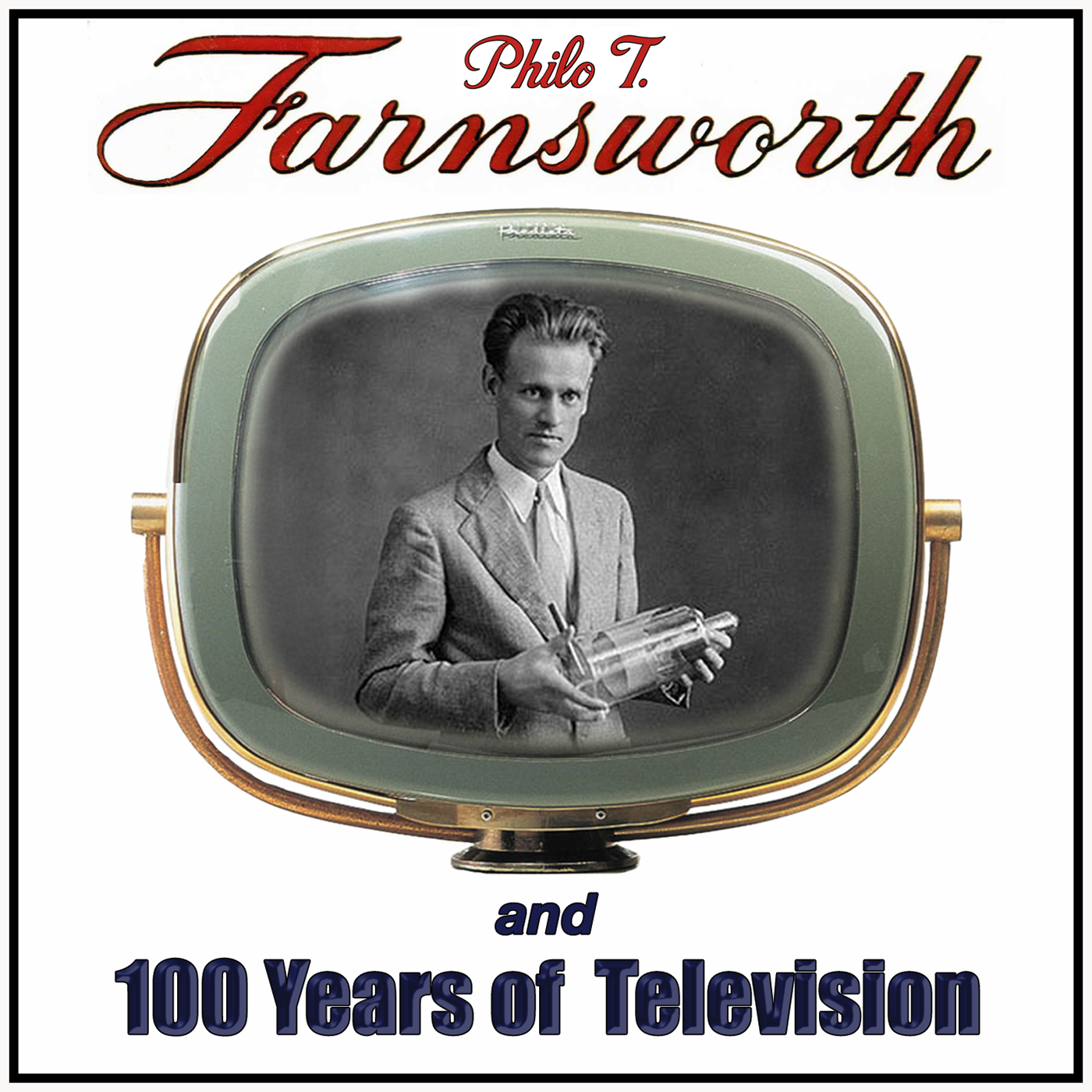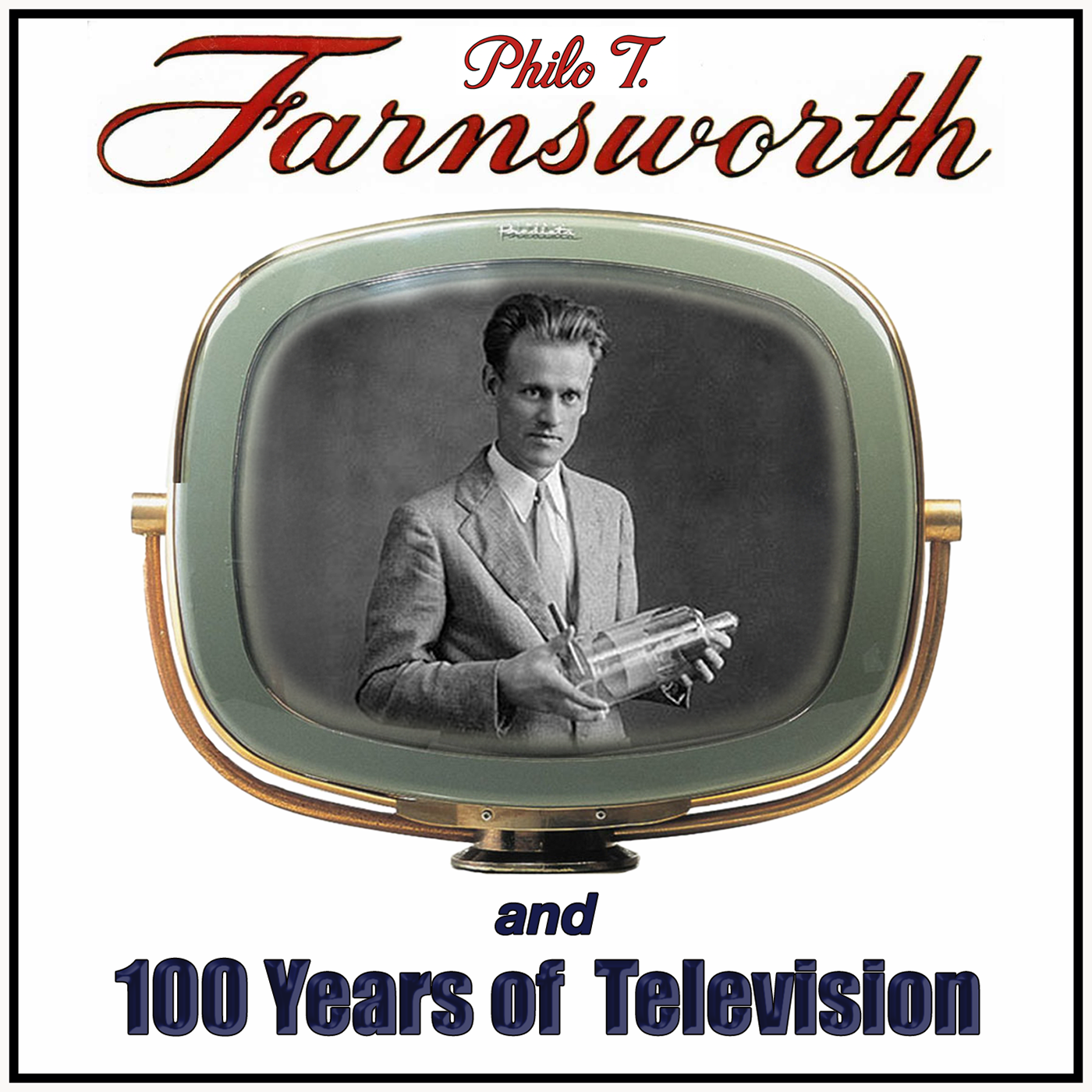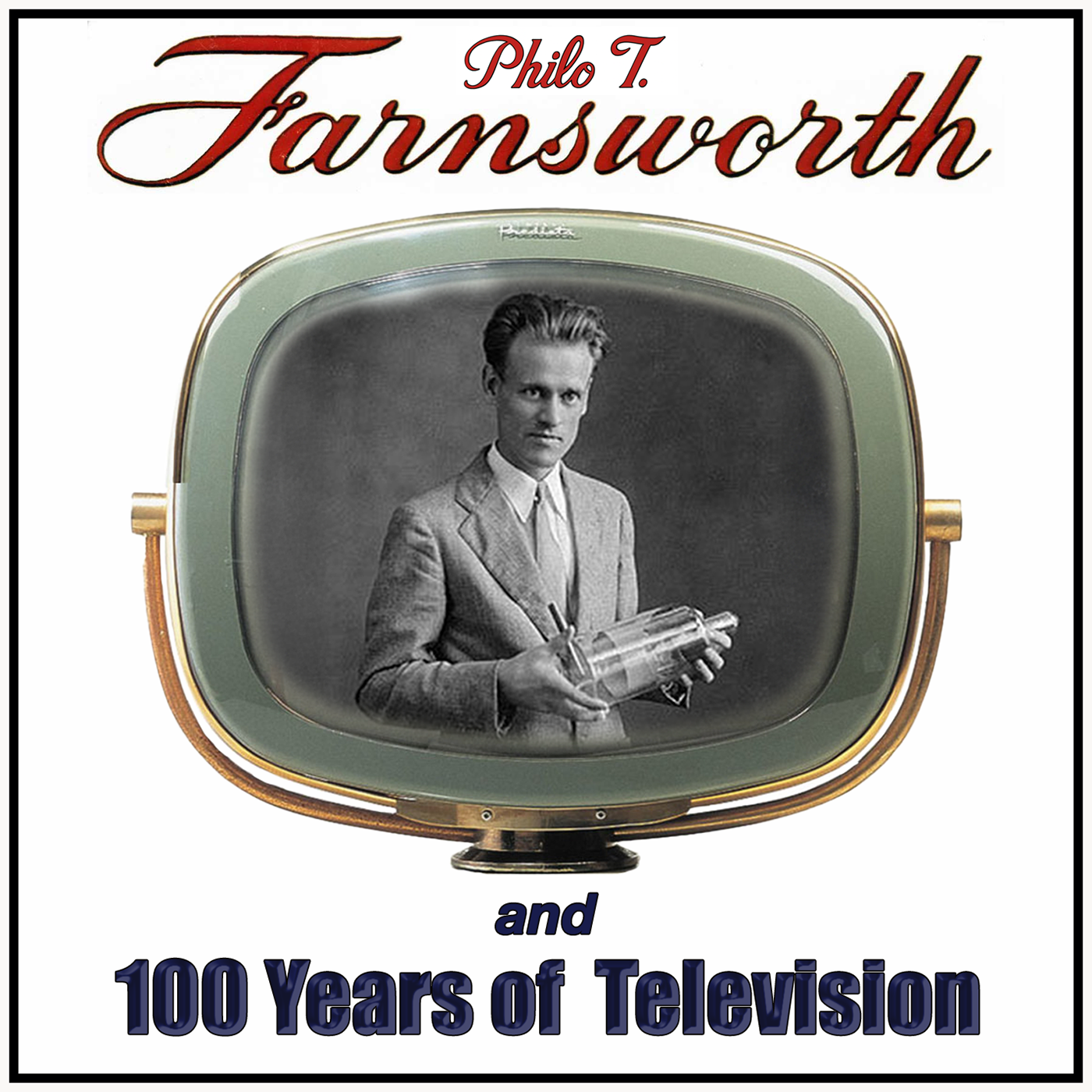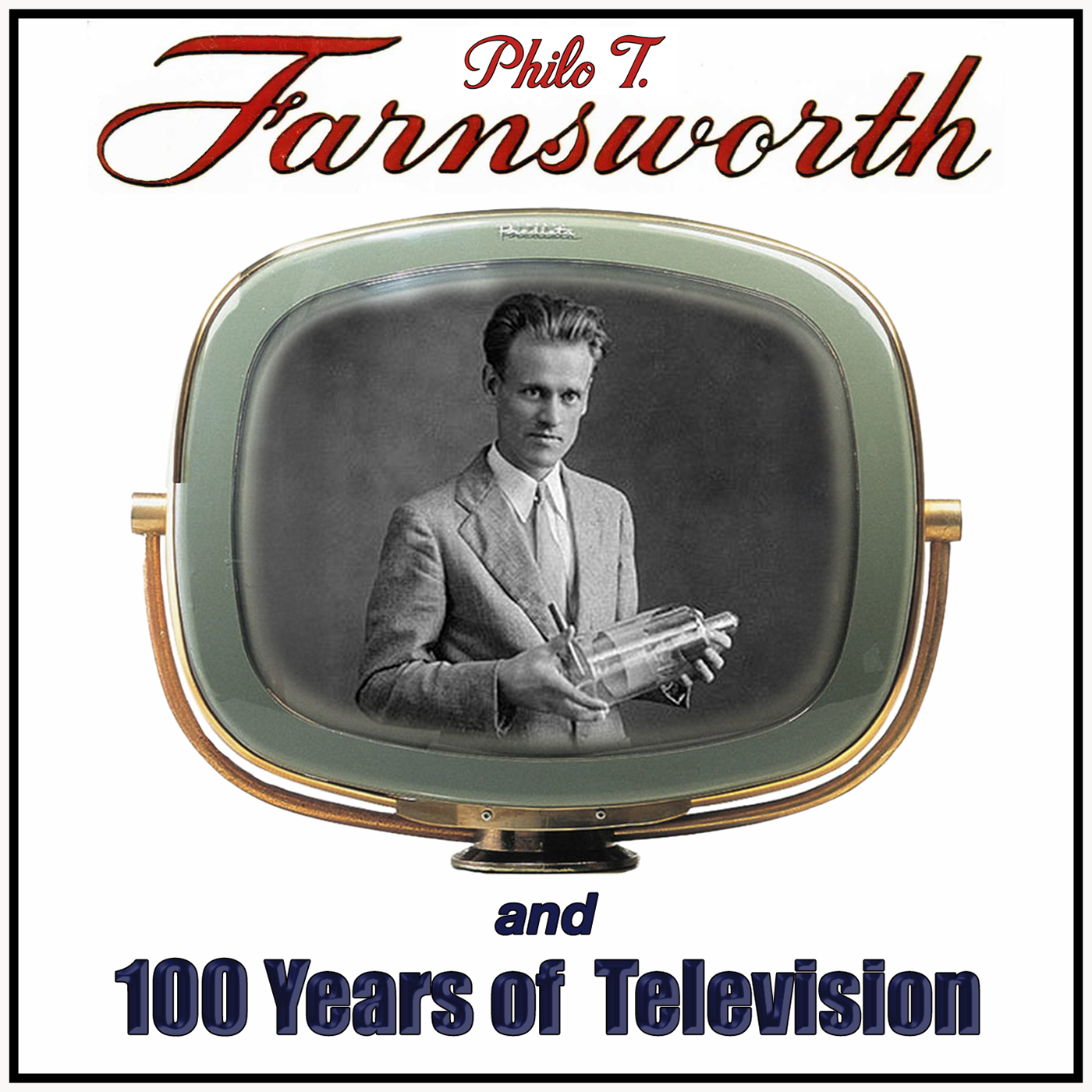Episode Transcript
[00:00:00] Speaker A: They all laughed at Christopher Columbus when he said the world was round they all laughed when Edison recorded sound they all laughed at Wilbur and his brother when they said that man could fly they told Marconi wireless was a phony it's the same old cry.
[00:00:21] Speaker B: Welcome to 100 Years of Television.
This is episode number six, a prologue to the countdown to the Centennial.
Today we're going to provide an answer to the what exactly happened on September 7, 1927, that is so worthy of a centennial?
It's time to answer that question, because next week, that's starting October 5, 2025, we're going to start counting down to the centennial of that date, which is when television was invented.
For 100 weeks until September 2027. This podcast is going to recall the top 100 milestones in the first 100 years of television and video.
I'm Paul Schatzkin, author of the Boy who Invented Television, the definitive biography of Philo T. Farnsworth, who invented the first all electronic television system in San Francisco in 1927.
In the previous two episodes, we talked about the advent of quantum mechanics in the first years of the 20th century and Albert Einstein's 1905 paper on the photoelectric effect, which set the theoretical stage for electronic television in the 1920s.
Today, we're going to revisit exactly how all that came about and try to make the case that it was a noteworthy turning point in human evolution.
Prologue Television is unique in the annals of invention because of how many ideas that would not ultimately work were pursued before somebody finally came up with the indispensable idea that would work.
By the 1920s, all the necessary pieces of the puzzle were on the board.
Persistence of vision yielded dramatic and often comic results. In motion pictures, radio waves carried not only telegraph signals, but voice and music.
And it was clearly understood that before motion pictures could be hitched onto radio waves, the images would somehow have to be scanned into individual elements and converted into a fluctuating current of electricity.
In 1921, the same year Einstein was awarded the Nobel prize for his 1905 paper on the photoelectric effect, the stage was set for somebody to come up with the right idea.
In the first decade of the new century, proposals began to percolate around the idea of using Carl Braun's cathode ray tube to to transmit and receive moving pictures by wire or radio.
As early as 1907, Boris Rosing, a Russian physicist and professor at the St. Petersburg Institute of Technology, experimented with a cathode ray tube as a receiver for signals Produced by a Nipkov style mechanical scanner. Though primitive, it was the first time an electronic display was used to produce a video image.
In 1908, A.A. campbell Swinton, a Scottish born electrical engineer, a Fellow of the Royal Society and a noted authority on x rays and cathode ray technology, was the first to propose using a cathode ray tube for both ends of a television system.
His ideas were published in 1908 and again in 1911 in the British journal Nature.
So the idea of using cathode ray tubes for television was already simmering, even while the most determined experimenters of the day were still spinning wheels.
By the 1920s, a whole slew of contraptions that reflected the physics of the late 19th century were built by Ernst Alexanderson at General Electric, Herbert Ives at AT&T, and independent experimenters like John Logie Baird in Britain and see Francis Jenkins in the United States.
What all of these video jalopies had in common was their reliance on the spiral perforated disc first proposed by Paul Nipkoff in the 1880s.
Meanwhile, on the rural frontier of Idaho, the most unlikely of prospects was thinking he might be uniquely suited for the task. Philo T. Farnsworth was the 14 year old descendant of the Mormon pioneers who had followed Brigham Young to the Salt Lake Valley of Utah.
His father made a living farming and hauling freight over the mountains with horse drawn wagons.
The boy showed an early interest in science, but it wasn't until he was 11 years old that he had his first personal encounter with actual electricity when his family moved to a homestead near Rigby, Idaho. In addition to an electrical generator and lighting, Farnsworth discovered journals and magazines in a loft above the house.
From those dusty pages, he learned the state of the art. He learned about Edison and Tesla, Marconi and Bell. And before he was even a teenager, he confided to his father his hope that he had been born an inventor.
Somewhere among those well thumbed pages, he read about the still fanciful notion of moving pictures that could fly through the air, and arrived at the realization that television could be just the thing to launch his career as an inventor.
Once the objective was in mind, he taught himself everything he could about cathode ray tubes, about electrons and about how electrons could be manipulated by magnets. And most of all, he studied the theories of Albert Einstein, in particular that 1905 paper on the photoelectric effect.
This brings us to the thing that arguably most distinguishes Farnsworth from his predecessors and in the long run, from his competitors. He was born in 1906.
The year after Einstein's annus mirabilis, that means the world he grew up in started with relativity and quantum mechanics.
That fact gave him a uniquely native 20th century perspective on from which to approach the riddle of television.
And so legend actually fact has it that one day in the summer of 1921, just weeks shy of his 15th birthday, while the great minds of science, financed by the biggest companies in the world, wrestled with 19th century solutions to a 20th century problem, Philo T. Farnsworth found himself strapped to a horse drawn disc harrow, cultivating a field row by row, turning the soil and dreaming about television to relieve the monotony.
As the open summer sun blazed down upon him, he stopped for a moment to survey his afternoon's work.
And then, in one vivid moment, everything he had been thinking about and studying synthesized in a novel way. And a daring idea crystallized in this boy's brain.
As he looked at the parallel lines stretching across the field. He suddenly imagined trapping light in a vacuum tube and transmitting it one line at a time on a magnetically deflected beam of electrons.
Finally, somebody had the right idea.
What remained to be seen was whether this untrained, self educated teenager could make it work.
Long story short, the idea for a fully electronic television camera tube occurred to Philo T. Farnsworth in the summer of 1921.
In the winter of 1922, he drew a sketch of that idea for his high school science teacher.
In 1926, after expecting for four years to find his idea in the next science magazine he opened, some well heeled bankers set him up with a grubstake and a loft in San Francisco.
In January of 1927, he applied for a patent for his idea and went to work to build an all electronic television system from scratch.
By September 7, 1927, the little lab gang he had assembled with his new wife Pam and her brother Cliff were ready to test the latest of several systems. They had assembled a glass slide with a simple straight line painted on. It was dropped between a bank of lights and the camera tube that Farnsworth had dubbed the Image Dissector.
In the adjacent room. They watched as the receiver flickered and bounced for a moment before the image stabilized.
The straight line appeared, shimmering boldly in an eerie blue hue on the face of the magic tube.
Rotate the slide, Cliff Farnsworth called out. And when Cliff did, the line on the receiver rotated too.
For the first time in history, information was being transmitted from the bottom of one empty bottle to the bottom of another.
Farnsworth recorded the moment in his journal, September 7, 1927. The received line picture was evident. This time one of his investors put it more graphically, telling another by telegraph, the damn thing works.
Defining the Right Idea the physicist and philosopher Roger Penrose has been quoted saying, having the right idea is one thing, but having the right idea and making it work is everything.
The century since 1927 has borne out Penrose's axiom.
Philo T. Farnsworth had the right idea, and he alone made it work.
So why, you are surely asking yourself by now, was his system the breakthrough that had eluded so many others?
The answer to that essential question lies in one paragraph of the patent Farnsworth had applied for earlier that year. That's U.S. patent 1773 980, which was granted in August of 1930.
In that patent, claim number 15 describes an apparatus for television which comprises means for forming an electrical image and means for scanning each elementary area of the electrical image, and means for producing a train of electrical energy in accordance with the intensity of the elementary area of the electrical image being scanned.
That's the legal language that announces the arrival of electronic video.
The unique idea that inspired Farnsworth that day in the field in Idaho is embodied in those two words. Electrical image.
The image dissector did the opposite of its mechanical predecessor.
The mechanical systems shined light on a subject and scanned the reflected light with spinning wheels.
Farnsworth's image dissector, working with a simple, elegant embodiment of Einstein's photoelectric effect in a vacuum tube, created an electrical counterpart to the optical image and scanned that.
In other words, the mechanical systems scanned the light.
Farnsworth scanned the electrons.
That was an epic breakthrough in what humans could do with quantum forces and particles.
And here we are, nearly a century later, conducting almost all of our business and communications on screens.
I can only hope that listeners can appreciate now why I have gone to such great lengths to retell this story, because it really was a big God damn deal.
But because of the way television was absorbed into the world in the decades that followed its arrival, our common knowledge of that momentous achievement has been mostly lost to posterity.
The whole aim of this podcast and the initiatives that accompany it is to restore our awareness of the true origins of the world's most ubiquitous appliance in time to observe its centennial two years from now, in 2027.
And so, starting on October 5, 2025, and for the 100 weeks to follow, I'm going to recall the top 100 milestones in the first 100 years of television.
Along the way, we' the explosive growth of the medium starting after World War II and learn what happened to the man who invented it.
So thanks for listening to 100 Years of Television, a two year countdown to the Centennial of Television on September 7, 2027.
For more, aim your gizmo to tv centennial.com this podcast was written, recorded, edited, engineered and uploaded by me, Paul Schatzkin and is a production of Farnovision.com if television was invented by somebody named Farnsworth, why don't we call it Farnovision?
[00:14:28] Speaker A: They all said we never would be happy. They laughed at us and how but ho ho ho, who got the laughs at us?



